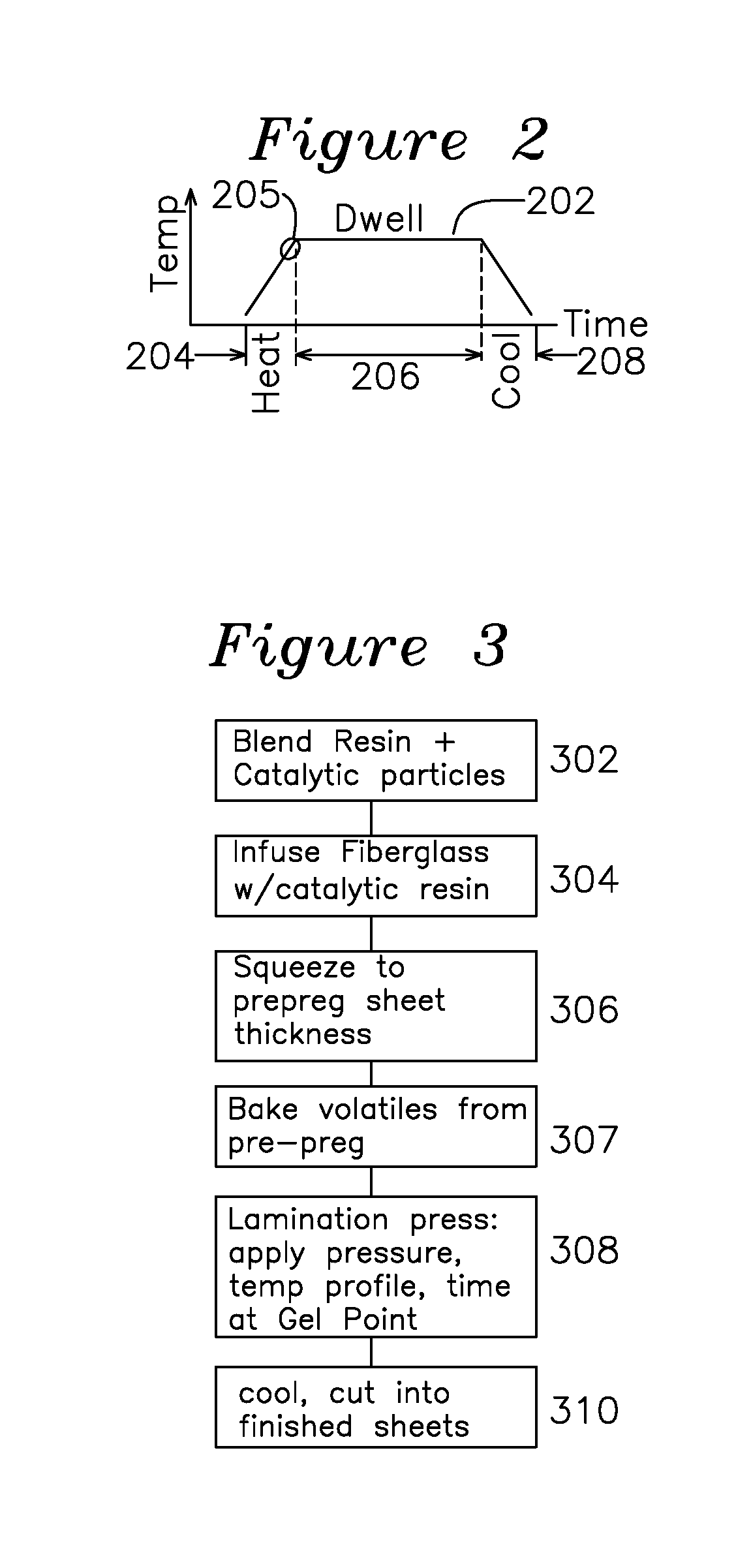Catalytic laminate apparatus and method
a technology of catalytic laminate and apparatus, which is applied in the direction of printed circuit aspects, electric connection formation of printed elements, and metal adhesion improvement of insulating substrates, etc., can solve the problems of reducing the fine pitch of traces, destroying the entire circuit board assembly and expensive components, and individual trace layers being laminated together
- Summary
- Abstract
- Description
- Claims
- Application Information
AI Technical Summary
Benefits of technology
Problems solved by technology
Method used
Image
Examples
Embodiment Construction
[0053]FIG. 1A shows an example process for fabricating pre-preg (a matrix of pre-impregnated fibers bound in resin). Many different materials may be used for the fibers of pre-preg, including woven glass-fiber cloth, carbon-fiber, or other fibers, and a variety of different materials may be used for the resin, including epoxy resin, polyimide resin, cyanate ester resin, PTFE (Teflon) blend resin, or other resins. One aspect of the invention is a printed circuit board laminate capable of supporting fine pitch conductive traces on the order of 1 mil (25 u), and while the description is drawn to the formation of copper traces using catalysts for electroless copper formation, it is understood that the scope of the invention may be extended to other metals suitable for electroless plating and electro-plating. For electroless deposition of copper (Cu) channels, elemental palladium (Pd) is preferred as the catalyst, although selected periodic table transition metal elements, such as group ...
PUM
| Property | Measurement | Unit |
|---|---|---|
| Temperature | aaaaa | aaaaa |
| Temperature | aaaaa | aaaaa |
| Fraction | aaaaa | aaaaa |
Abstract
Description
Claims
Application Information
 Login to View More
Login to View More - R&D
- Intellectual Property
- Life Sciences
- Materials
- Tech Scout
- Unparalleled Data Quality
- Higher Quality Content
- 60% Fewer Hallucinations
Browse by: Latest US Patents, China's latest patents, Technical Efficacy Thesaurus, Application Domain, Technology Topic, Popular Technical Reports.
© 2025 PatSnap. All rights reserved.Legal|Privacy policy|Modern Slavery Act Transparency Statement|Sitemap|About US| Contact US: help@patsnap.com



